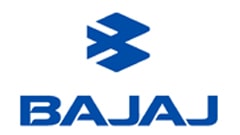Postgraduate Diploma in Tool Design CP16 – PGDTD
August 11, 2023 2025-04-17 11:34Postgraduate Diploma in Tool Design CP16 – PGDTD
Postgraduate Diploma in
Tool Design
CP16 - PGDTD
Duration
The program spans over 1 year, divided into 2 semesters. The academic year commences in September and concludes in August.
Program type
This is a PGDTD program
Program Fee
Per Semester (Refer Brochure)
Department
Tool Design
- About
- Eligibility
- Summary
- Training Methodology
- Curriculum
- Outcomes
- Campuses
About
This course is specifically tailored for engineering graduates (B.E./B.tech), equipping them with essential knowledge and skills in subjects such as Press Tools, Mold Design, and related areas. Its primary objective is to enable students to excel in Tool Design, with a specific focus on Press Tools for Sheet Metal and Moulds for Plastics. By undertaking this course, students can acquire proficiency in these domains.
Postgraduate Admission Details
- Brochure - Postgraduate Programmes
- Full Time Postgraduate Program Highlights
- Common Entrance Exam Syllabus & Model Question Paper
Eligibility
To be eligible for this program, a trainee must meet one of the following criteria:
- Entry Norms: Engineering Degree - Mechanical / Production / Industrial & Production Engineering / Industrial Engineering & Management / Automobile / Aeronautical / Mechatronics
- Eligibility:PASS in Engineering Degree & NTTF entrance exam
- Maximum Age Limit: No Age Limit
Summary
The one-year program offered at Bangalore's Peenya campus provides engineering graduates with advanced theoretical and practical knowledge in Tool Design. The program aims to equip students with the necessary skills to meet the evolving demands of industries, focusing specifically on press tools and molds. Graduates of this program will have ample opportunities for employment in tooling and gauging industries, as well as in CAD/CAM fields.
Upon completion of the program, students are expected to:
- Design press tools for sheet metal components
- Design moulds for plastic components
- Design pressure die casting dies
- Design jigs and fixtures, gauges and application of GD&T
- Use CAD in the design of press tools, moulds, jigs & fixtures and die casting dies
- Carry out process planning and manufacture of press tools, moulds and jigs & fixtures
Training Methodology
The program offers:
- Industrial visits
- Talks by experts
- Hands-on training at centers
- Visits to industrial exhibitions and seminars
Curriculum
| I SEMESTER | II SEMESTER |
|---|---|
| Workshop - I | Workshop - II |
| Engineering Drawing and 3D CAD | Die Casting Dies |
| Advanced Materials and Manufacturing Processes | Inspection & Gauging |
| GD&T and Tolerance Stack Up Analysis | Tool Manufacturing and CAM |
| Press Tools | Jigs & Fixtures - II |
| Jigs & Fixtures - I | Plastic Moulds |
Outcomes
- This program offers great career opportunities as Tool Designer / Design Engineer : in designing of Press tools, Plastic moulds, Jigs & Fixtures, Die Casting Dies
- CAD-CAM engineer
- After completion of this program, students can expect annual salaries up to Rs.9.0 lakhs based on their performance
Lateral Entry to PGTE (Postgraduate Degree in Tool Engineering)
Students can carry on for higher education after the completion of PGDTD programme. Students who possess PGDTD qualification, are eligible for lateral admission to the third semester of PGTE (Postgraduate Degree in Tool Engineering) programme.
Campus
NTTF School of Postgraduate Studies (SPG)
Post Box No. 5857, 23/24, 2nd Phase, Peenya, Industrial Area, Bengaluru - 560058
Phone: +91 80-28393167 / 28391223 / 6364864695
E-mail: nttf-postgraduate@nttf.co.in
Campus Placements
At NTTF, we connect you with top-notch companies, opening doors to exciting career prospects. Join us and unlock a future filled with success, growth, and limitless potential!






















Student Testimonials
We at NTTF are overwhelmed to receive positive feedback consistently from our students and alumni over the years. Here are a few alumni testimonials highlighting our programs and training facilities.
FAQ
What is the full form of PGDTD?
The full form of PGDTD is Postgraduate Diploma in Tool Design – CP16 – PGDTD.
What is a PG diploma course?
A Postgraduate (PG) diploma course is a specialized program designed to provide advanced knowledge and skills in a specific field after completing an undergraduate degree. It typically focuses on practical and industry-relevant education to enhance career opportunities.
Can I do a PG diploma after an engineering degree?
Yes, you can pursue a PG diploma after completing an engineering degree. The Postgraduate Diploma in Tool Design – CP16 – PGDTD offered by NTTF School of Postgraduate Studies (SPG), for example, is specifically tailored for engineering graduates in Mechanical, Production, automobile or related fields.
Is there PGD in engineering?
Yes, there are PG diploma programs in engineering, such as the Postgraduate Diploma in Tool Design – CP16 – PGDTD offered by NTTF, which focuses on advanced tool design skills for engineering graduates.
Is PG Diploma equal to Masters?
A PG Diploma is not equivalent to a Master’s degree. While both offer advanced education beyond an undergraduate degree, a PG Diploma is usually shorter in duration of one year and more focused on practical industry oriented skills, whereas a Master’s degree is more comprehensive and research-oriented.
Is a PG Diploma valuable?
Yes, a PG Diploma is valuable as it provides specialized skills and practical knowledge that can significantly enhance your career prospects in specific industries. For example, the PGDTD from NTTF prepares students for careers in tool design and related fields.
Who is eligible for PGDTD?
To be eligible for the PGDTD program, candidates must have an engineering degree (B.E/B.Tech) in Mechanical, Production, Industrial & Production Engineering, Industrial Engineering & Management, Automobile, Aeronautical, or Mechatronics. Additionally, you must pass the SPG – NTTF entrance exam.
What is the scope of PGDT?
The scope of PGDTD is broad, with graduates finding opportunities in designing press tools, plastic molds, die-casting dies, jigs, and fixtures. You can work in tooling and gauging industries, as well as in CAD/CAM fields.
Which PG course is best after BE?
The best PG course after a Bachelor of Engineering (BE) depends on your career goals. If you are interested in tool design and manufacturing, the Postgraduate Diploma in Tool Design – CP16 – PGDTD is an excellent choice.
Can a diploma be done after BTech?
Yes, you can pursue a diploma after completing a BTech degree. For example, a Postgraduate Diploma in Tool Design – CP16 – PGDTD can be pursued after a BTech in Mechanical or related engineering fields.
Is PG Diploma higher than BTech?
A PG Diploma is a specialized qualification that builds on the knowledge gained in a BTech. While it is not a higher academic degree, it provides advanced practical skills in specific areas, making it valuable for career advancement.
What is the duration of PGDT course?
The duration of the PGDTD course at NTTF School of Postgraduate (SPG) is one year, divided into two semesters.
Can I do PG after BTech?
Yes, you can pursue postgraduate studies after completing a BTech. You can opt for a PG Diploma like the Postgraduate Diploma in Tool Design – CP16 – PGDTD or a Master’s degree, depending on your career aspirations.



